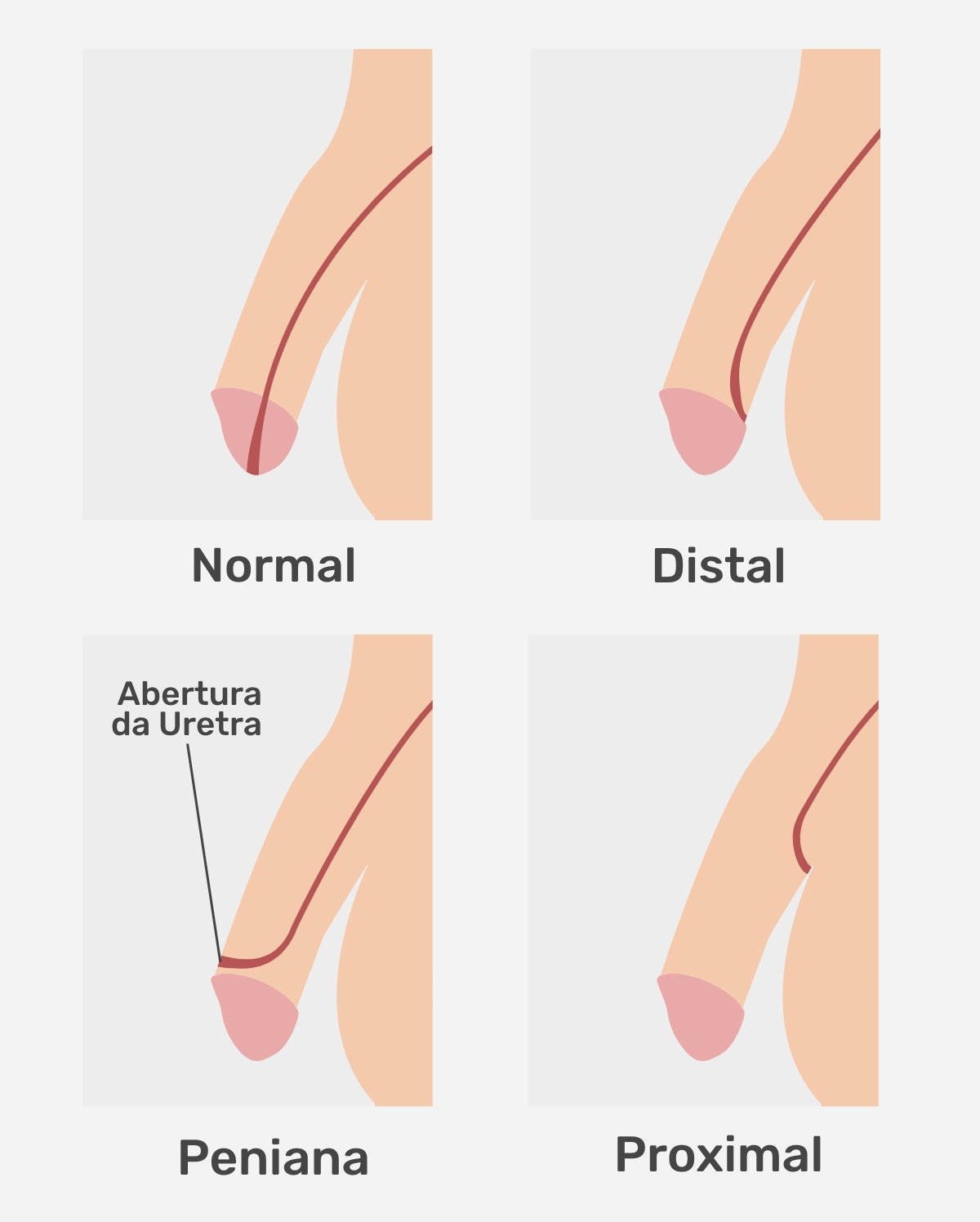Hypospadias is a malformation of the male genitalia characterized by the abnormal opening of the urethra beneath the penis and not at its tip, and is generally identified shortly after birth.
Boys with hypospadias have urine output in the wrong place and may notice an abnormal curvature of the genitalia when the penis is erect. Furthermore, when left untreated, hypospadias can also make it difficult to have intimate relationships in adulthood.
If hypospadias is suspected, it is important to consult a urologist or, in the case of children, a pediatrician. Treatment of hypospadias generally involves correction through surgery, which, in children, tends to be performed between 6 months and 18 months of age.

Main symptoms
The main symptoms of hypospadias are:
- Absence of the urethral opening at the tip of the penis;
- Skin of the penis covering the head of the organ incompletely;
- Abnormally shaped head of the penis;
- Abnormal curvature of the penis when erect;
- Stream of urine that does not go forward.
Furthermore, it is also common for men with hypospadias to feel discomfort when their penis is erect and, in more severe cases, to have difficulty having children due to the abnormal location of the opening of the urethra, or even to be unable to have intimate relations.
Hypospadias is typically identified shortly after birth when a doctor examines the baby. However, in case of suspicion, it is recommended to consult a urologist or, in the case of children, a pediatrician, to confirm the diagnosis and initiate appropriate treatment.
Types of hypospadias
The main types of hypospadias are:
- Distal: the opening of the urethra is located somewhere near the head of the penis;
- Penile: the opening appears along the body of the penis;
- Proximal: the opening of the urethra is located in the region close to the scrotum;
- Perineal: It is the rarest type, in which the opening of the urethra is located close to the anus.
In hypospadias, the exit from the urethra is located underneath the penis, which is different from what happens in epispadias, when its exit is at the top of the organ. Understand better what epispadias is.

How the treatment is carried out
The treatment of hypospadias is usually done through surgery, and is normally indicated between 6 months and 18 months of age. Furthermore, more than one surgery may be necessary until the correction is complete.
During hypospadias surgery, the wrong opening of the urethra is closed and a new one is made at the tip of the penis, and the abnormal curvature of the organ, if any, is also corrected.
Normally, it is not recommended to perform circumcision before surgery, because it may be necessary to use the skin from the foreskin to reconstruct the penis.
What is recovery like after hypospadias surgery?
After surgery, a probe is usually placed in the urethra and may need to remain in place for a few days, even after leaving the hospital. Normally, the child is hospitalized for 2 to 3 days and can go home shortly afterwards, and it is important to avoid exertion, especially during the first few weeks after surgery.
Furthermore, it is important to pay attention to signs of infection at the surgery site, such as worsening swelling, redness or pain, for example, and it is important to consult the surgeon as soon as possible if they appear.
Bibliography
- STATPEARLS. Hypospadias Urogenital Reconstruction. 2022. Available at: <https://www.ncbi.nlm.nih.gov/books/NBK564407/>. Accessed on January 13, 2023
- BASKIN, Laurence. What Is Hypospadias?. Clin Pediatr (Phila). Vol.56, n.5. 409-418, 2017
- CDC. Facts about Hypospadias. Available at: <https://www.cdc.gov/ncbddd/birthdefects/hypospadias.html>. Accessed on January 13, 2023
- STATPEARLS. Hypospadias. 2022. Available at: <https://www.ncbi.nlm.nih.gov/books/NBK482122/>. Accessed on January 13, 2023
- HORST, H. J. R; WALL, L. L. Hypospadias, all there is to know. Eur J Pediatr. Vol.176, n.4. 435–441, 2017
- UROLOGY CARE FOUNDATION. Hypospadias. Available at: <https://www.urologyhealth.org/urology-az/h/hypospadias>. Accessed on Aug 17, 2021

Sign up for our newsletter and stay up to date with exclusive news
that can transform your routine!
Warning: Undefined array key "title" in /home/storelat/public_html/wp-content/plugins/link-whisper-premium/templates/frontend/related-posts.php on line 12
Warning: Undefined array key "title_tag" in /home/storelat/public_html/wp-content/plugins/link-whisper-premium/templates/frontend/related-posts.php on line 13




